The Amazon River is a fascinating body of water. Not only is it one of the most important rivers in the world, it is also home to an abundance of biodiversity. It is what makes the Amazon Rainforest thrive. Without the Amazon Rainforest, Planet Earth would surely cease to exist.
The Amazon is also a mysterious body of water. Beginning in the 1500s with European exploration, researchers and scientists were surprised to keep uncovering more and more of the river’s truths that had been a mystery before.
This intriguing river is truly unrivaled in so many categories, so let’s dive right in and learn 10 incredible facts about the Amazon River.
Largest River by Volume

The Amazon River is the largest by volume and also has the largest drainage basin in the world.
©Crazy Owl Productions/Shutterstock.com
The Amazon River is the second-longest river in the world, although some experts dispute this and argue that the Amazon is the longest river, surpassing the Nile by a smidge. However, there is no dispute about the river’s volume. It has an average discharge of 7.9 million cubic feet, which means the Amazon is the largest river in the world.
The river also has a drainage basin of about 2.7 million square miles, right into the Atlantic Ocean. Interestingly enough, the Amazon contains 20% of the world’s fresh water.
Extremely Biodiverse

The Amazon River is home to an abundance of biodiversity, especially because the Amazon Rainforest is concentrated in large parts of the river.
©Anirut Krisanakul/Shutterstock.com
The Amazon Rainforest is extremely biodiverse, containing anywhere between 10% to 30% of the biodiversity of the planet. Hence, the Amazon River is also very biodiverse. It is home to an abundance of species that live in the river and the areas nearby. The river itself is home to over 2,000 species of fish and 400 amphibians. If you get the chance to take an Amazon boat tour, be on the lookout for some native species that are only found in the Amazon.
A few examples of animals found in the river and nearby areas include frogs, anacondas, piranhas, sloths, toucans, and macaws. You can also find one of the most gorgeous creatures on the planet in the Amazon River. It is a rare, and unfortunately endangered, species called the boto. The boto is a dolphin whose skin can appear pink, which is why it’s also called the pink river dolphin.
Although this creature is friendly, another rare animal that swims in the Amazon is the endangered black caiman. It is the strongest predator in the rainforest, so we suggest not to dip your hands in the river.
The River’s Course
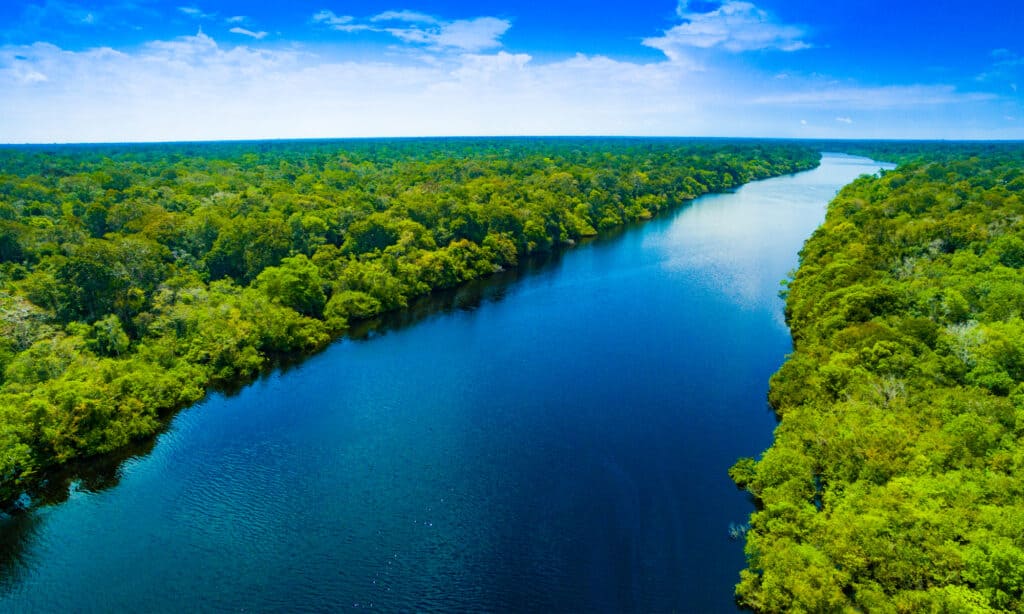
Millions of years ago, the river used to run in the opposite direction as today.
©worldclassphoto/Shutterstock.com
The Amazon River originates in Peru and passes, along with its tributaries, through a total of nine countries — Peru, Ecuador, Colombia, Venezuela, Brazil, Bolivia, Suriname, Guyana, and French Guiana. Of course, the river’s origin starting in the Andes Mountains was not always the case.
The river used to flow the other way than it does now. Today, the river drains into the Atlantic Ocean, which means it flows west to east, but millions of years ago, it flowed in the other direction. The reason? The Andes Mountains formed about 15 million years ago and it stopped the river from draining into the Pacific Ocean. It is believed that it was landlocked for five million years before it figured out a way to change its course and find a drainage system, this time to the Atlantic Ocean.
Amazon’s Unique History
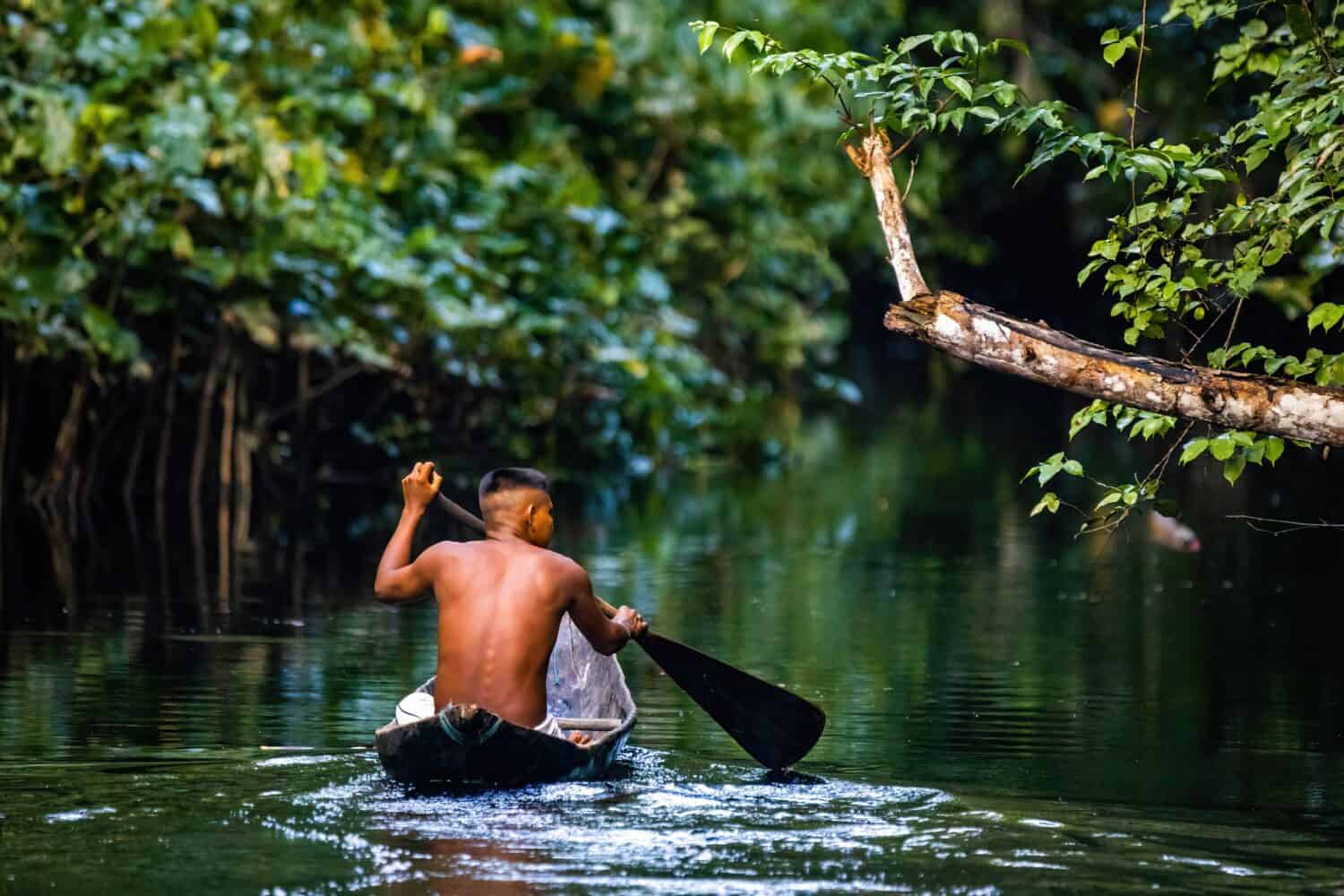
The Amazon has a unique history and the area around it has always been inhabited by humans — Indigenous tribes at first and now by millions of people.
©Photo Spirit/Shutterstock.com
The Amazon River has existed for millions of years. Scientists believe that it is over 11 million years old and that the way it currently flows is about 2.4 million years. In the grand scheme of things, the river is a young one compared to others around the world.
Tribes have lived along the river for thousands of years and it was only in the 1500s that Europeans went to explore the region. The name “Amazon” was given by Francisco de Orellana, who was one of the first Spanish explorers in the area. The name comes from Greek mythology and it represented a female group of warriors that fought together alongside men in battle.
Amazing Coral Reef System
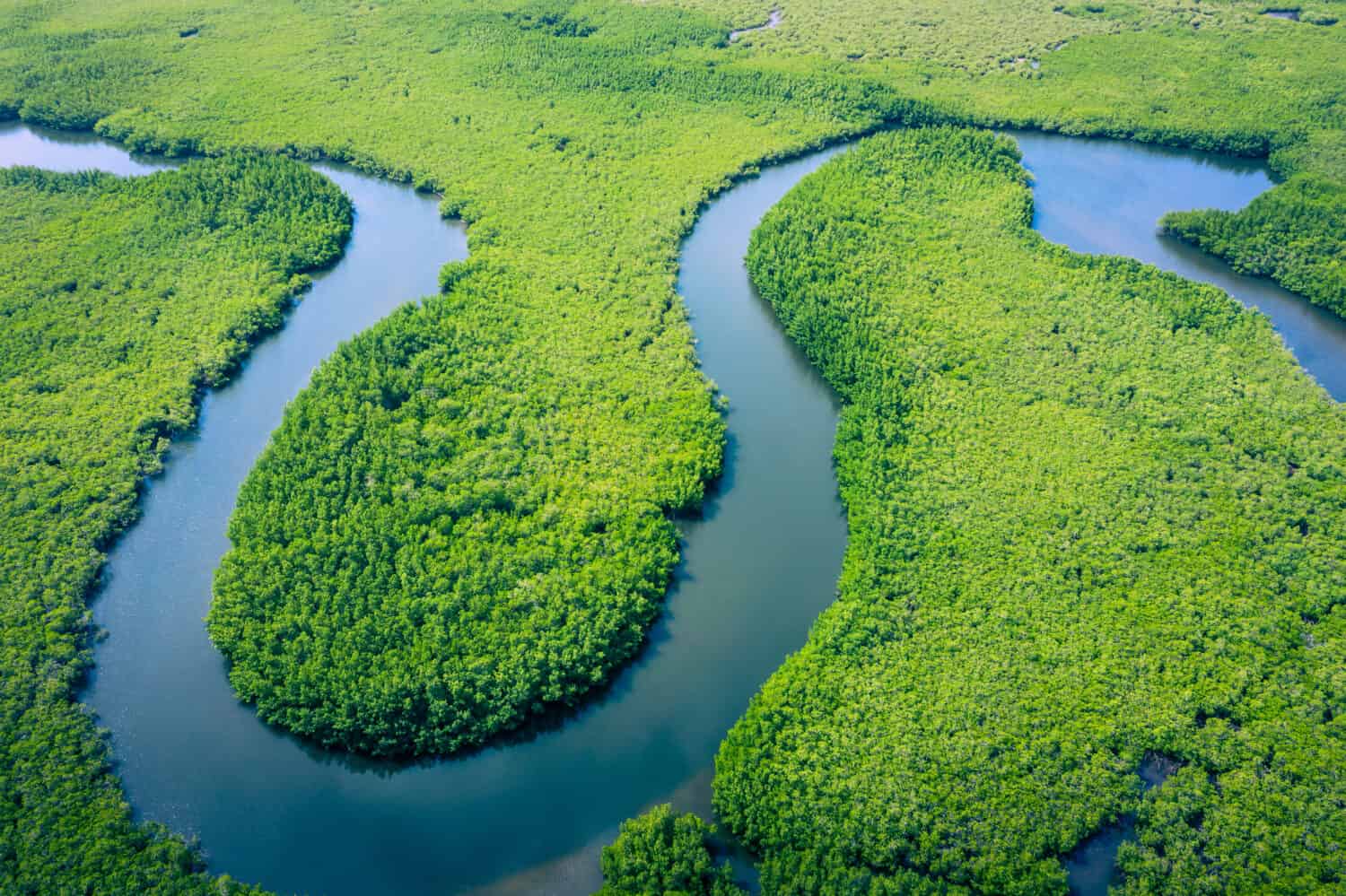
Scientists discovered a previously unknown coral reef system in the Amazon River in 2016.
©Curioso.Photography/Shutterstock.com
Scientists discovered that the Amazon River has a coral reef system. Because of so much sediment from the river, the coral reef system has been hidden for years. In 2016, scientists uncovered a coral reef system that is over 9,500 kilometers squared. There are sea sponges the size of an elephant, exotic fish that traverse the area, coral, and even sea stars.
Hamza River Below the Amazon

There is a river, unofficially called the Hamza River, that is 2.4 miles below the Amazon River.
©sashamol/Shutterstock.com
The Amazon is just full of secrets and astonishing things that scientists keep uncovering. This came five years before the discovery of the coral reef system. In 2011, scientists found that it was true that there is a river underneath the Amazon. Yes, that’s right! It is called the Hamza River, which is named for the scientist in charge of the research and the underground river is 2.4 miles below the Amazon. Scientists believe that it may be wider than the Amazon, but it contains less water.
No Bridges

The Amazon River has no bridges, which means travel has to be done by sea vessels.
©ESB Professional/Shutterstock.com
Believe it or not, there are no bridges that traverse over the Amazon River. If you want to get across, like the 10+ million people living near the river, you will have to go by boat. The reason behind this is actually due to safety. The Amazon is a fastidious river that can fluctuate width quite drastically. During the rainy season, the water level rises paramountly and it causes the river to triple in width. The bridge built would need to be sturdy and long to avoid the Amazon’s instabilities.
Home to Amazon Rainforest Tribes
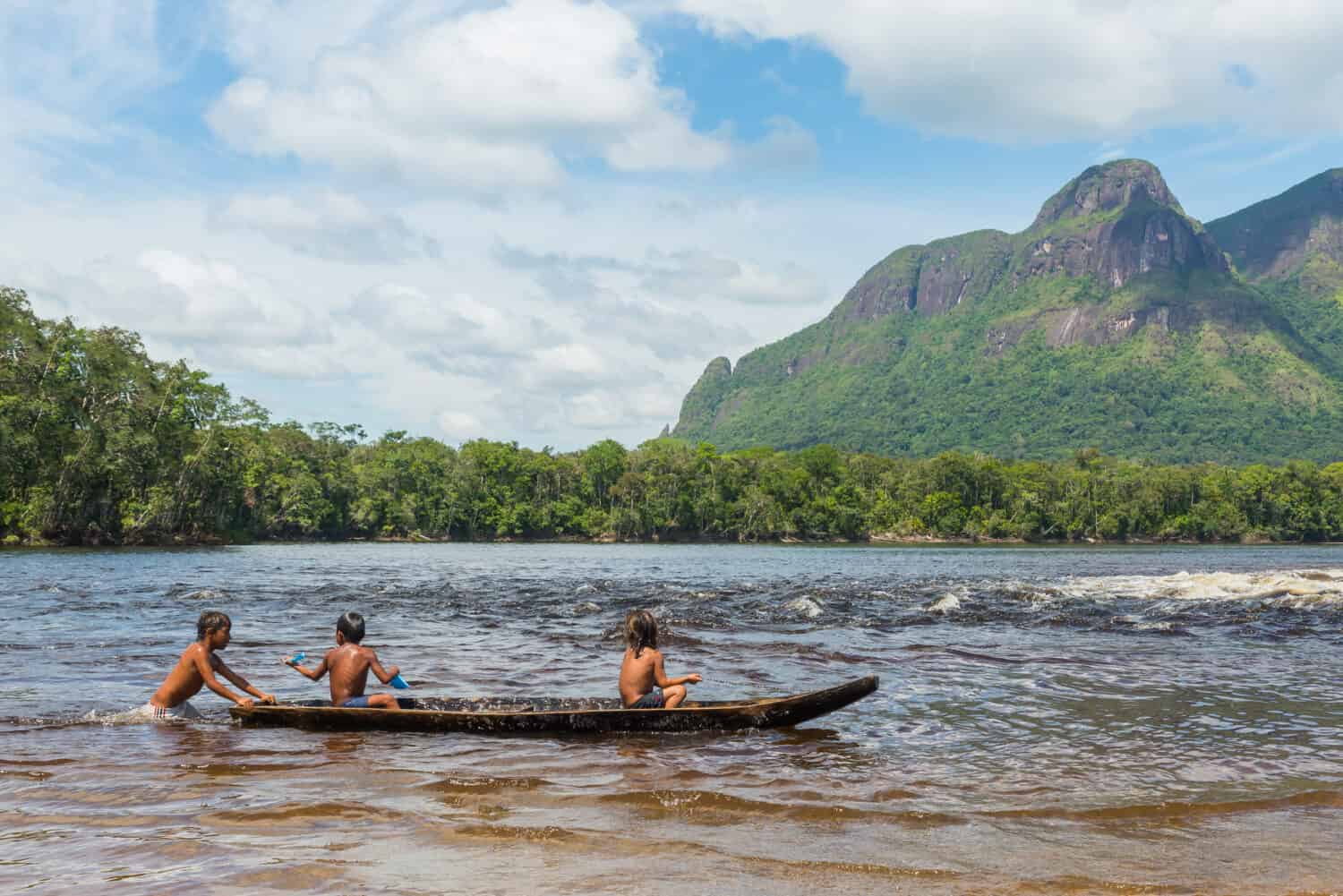
A few Amazon Rainforest tribes still live along the river, though many died during the European exploration of the river in the 1500s.
©Paolo Costa/Shutterstock.com
The Amazon Rainforest has long been home to many Amazonian tribes. Some have lived deep in the rainforest and were not known to exist until a few years ago. Unfortunately, most of the Amazon Rainforest tribes were slaughtered by European explorers or they died of the diseases the Europeans brought with them.
Natural Resources Abundance

There is an abundance of natural resources that countries have cultivated over the years.
©PARALAXIS/Shutterstock.com
The Amazon River is abundant in natural resources. These natural resources are important for humans and their respective economies. The natural resources found in the river and surrounding areas include copper, gold, tin, nickel, and almost 15% of the world’s supply of bauxite.
Economy and Water Supply
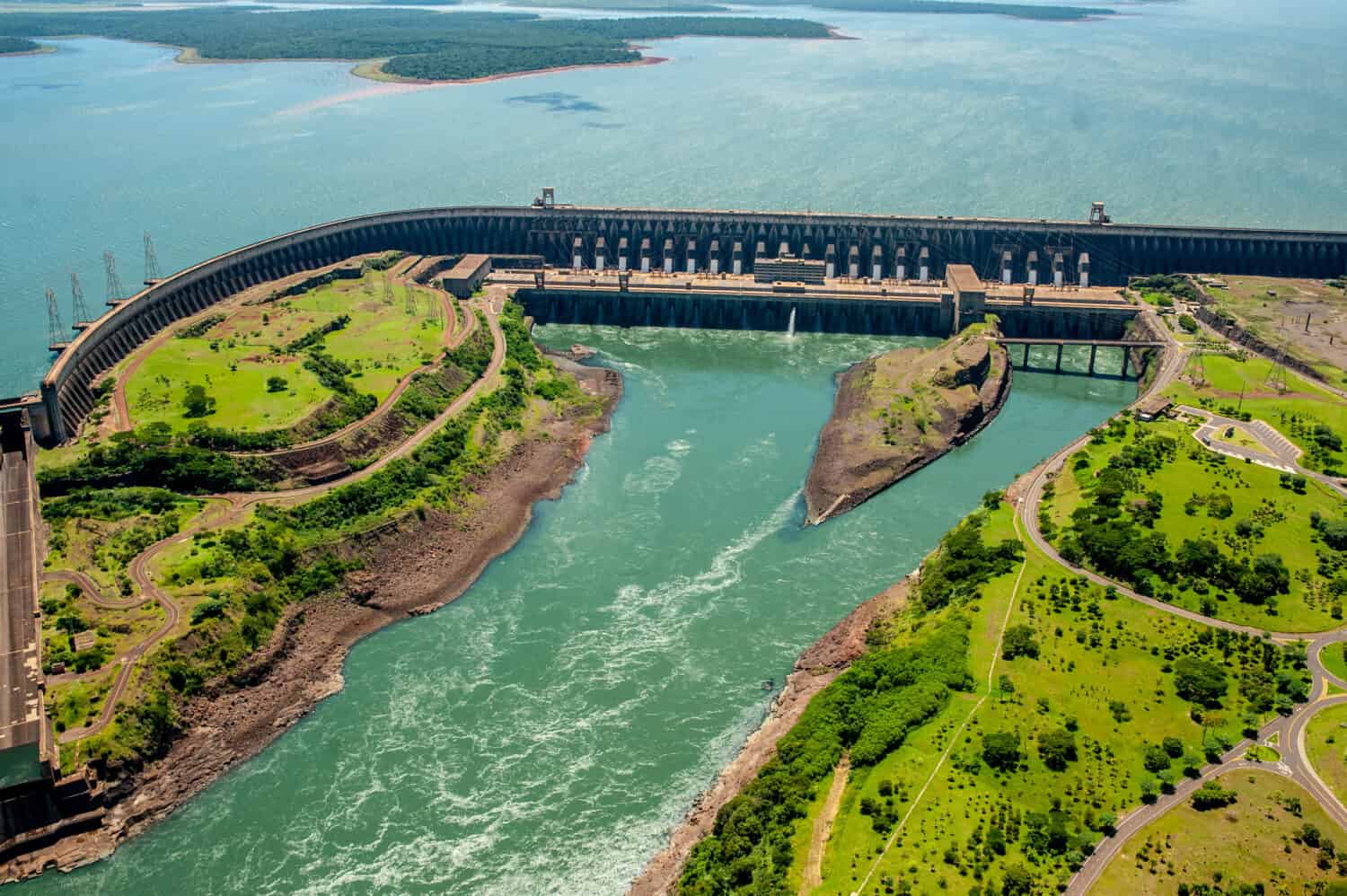
The Amazon River is an important source for several countries’ economies.
©Mykola Gomeniuk/Shutterstock.com
The Amazon River is an important part of the economies of many South American countries. The fishing economy is strong in several areas throughout the river. In addition, the river also provides countries with a potent water source. Lastly, there are 142 dams (and soon to be more) near the Andes Mountains that provide electricity to millions of people.
Conclusion
And there you have it, these are 10 incredible facts about the Amazon River. This incredible and majestic river is home to a rich biodiversity unmatched by few bodies of water in the world. The immense impact this river has on the world is unique and quite powerful. Unfortunately, human pollution and adjacent deforestation of the Amazon Rainforest have affected the river and the wildlife in the area.
Without the river, millions would be left without valuable drinking water. There are efforts by governments and organizations alike to save the river and ensure its environmental protection.
The photo featured at the top of this post is © iStock.com/JarnoVerdonk
Thank you for reading! Have some feedback for us? Contact the AZ Animals editorial team.







